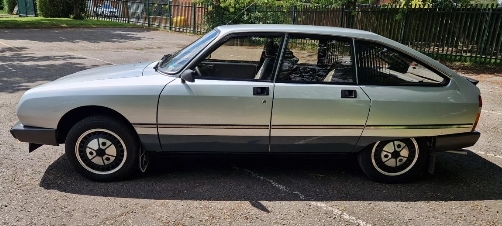The Evolution of the Mercury Comet: A Classic American Compact
The Mercury Comet holds a significant place in automotive history as one of the quintessential American compact cars. Produced by the Mercury division of Ford Motor Company, the Comet was introduced during a time when American automakers were pivoting toward smaller cars to meet changing consumer demands. This article provides a detailed overview of the Mercury Comet’s evolution, including its production years, model variants, and trim levels.
Origins and Introduction (1960-1963)
The Mercury Comet was first introduced in 1960 as a response to the growing popularity of compact cars. It originated as a variant of the Ford Falcon, sharing several design attributes and underpinnings. The 1960 Comet featured a distinctive design, characterized by clean lines and a space-age aesthetic that appealed to many consumers.
Key Models and Trim Levels:
- 1960: The initial lineup included the basic model, often referred to as the “Comet,” and the Comet Custom, which added chrome trim and upgraded interior features. Engine options included a 144 cubic inch (2.4L) inline-six and a more powerful 170 cubic inch (2.8L) six-cylinder engine.
- 1961: The introduction of the Comet S-22 sport model, which included more aggressive styling cues, bucket seats, and a floor-mounted shifter. The engine options expanded to include the 221 cubic inch (3.6L) V8 for better performance.
- 1962: A mid-cycle refresh brought new features, with the S-22 gaining additional sporty elements and the option of a 260 cubic inch (4.3L) V8 engine.
- 1963: This year saw the introduction of a four-door sedan in addition to the two-door coupe and station wagon variants, further expanding the Comet’s appeal.
The Shift to a More Robust Design (1964-1969)
In 1964, the Mercury Comet underwent a significant redesign as part of the transition to the mid-sized car segment. This change came as the compact segment began to evolve, responding to the increasing need for larger, yet still economical vehicles.
Key Models and Trim Levels:
- 1964: The third-generation Comet featured a longer body, more sophisticated styling, and additional trim levels including the Comet 404, which offered extra luxury features.
- 1965-1966: The Comet made waves with the introduction of the Caliente trim, which was aimed at a more performance-oriented audience. The 1966 model included numerous engine options, including the powerful 289 cubic inch (4.7L) V8 and the introduction of a high-performance 302 cubic inch (4.9L) engine.
- 1967-1968: This era saw even more styling updates, along with additional features like power steering and air conditioning. New trims included the Comet GT, which provided sporty features such as dual exhaust and upgraded suspension.
- 1969: The Comet underwent its first significant styling overhaul since it had shifted to the mid-sized platform, with a more aggressive stance and higher trim packages featuring more luxury options.
.

.
Final Years and Transition (1970-1977)
The early 1970s marked a pivotal period for the Comet, as changing consumer preferences and regulations began to shift the automotive landscape. The compact segment was evolving into the smaller and more fuel-efficient models due to the oil crisis, tighter emission standards, and a growing interest in environmental issues.
Key Models and Trim Levels:
- 1970: The Comet was offered in several trims including base, Caliente, and GT. Engine offerings included six-cylinder engines as well as the 351 cubic inch (5.8L) V8, emphasizing performance in a compact vehicle.
- 1971-1973: During this period, the Comet continued to see minor styling updates and engine offerings, including the introduction of a 429 cubic inch (7.0L) V8 in performance trims. However, the larger engine options were phased out due to increasing fuel prices and environmental regulations.
- 1974: The model underwent another facelift, focusing on a more aerodynamic design that would better meet new fuel standards.
- 1975-1977: The Comet saw its final years of production with very few changes, emphasizing its practicality as a compact car. The final model years included basic trims that appealed to budget-conscious buyers.
The End of an Era: 1977 and Beyond
By 1977, the Mercury Comet had established itself as a classic in the compact car marketplace. However, because of declining sales and a shift in consumer preferences towards more fuel-efficient cars, the Comet was discontinued after the 1977 model year. It was replaced by the Mercury Zephyr, which continued the tradition of compact cars under the Mercury brand.
Legacy of the Comet
The Mercury Comet was more than just a vehicle; it represented evolving American automotive trends. From its initial introduction as a compact counterpart to the Falcon, to its rise as a mid-sized option in the performance arena, the Comet adapted to market demands while offering style, practicality, and innovative engineering.
Conclusion
The Mercury Comet stands as a testament to the adaptability of American automotive design through tumultuous shifts in consumer behavior and market pressures. While its production ended in 1977, the Comet remains a beloved classic among car enthusiasts and collectors, revered for its unique characteristics and rich history. As the compact car segment continues to evolve, the legacy of the Mercury Comet serves as a perennial reminder of the durability and charm of classical American automobiles.







